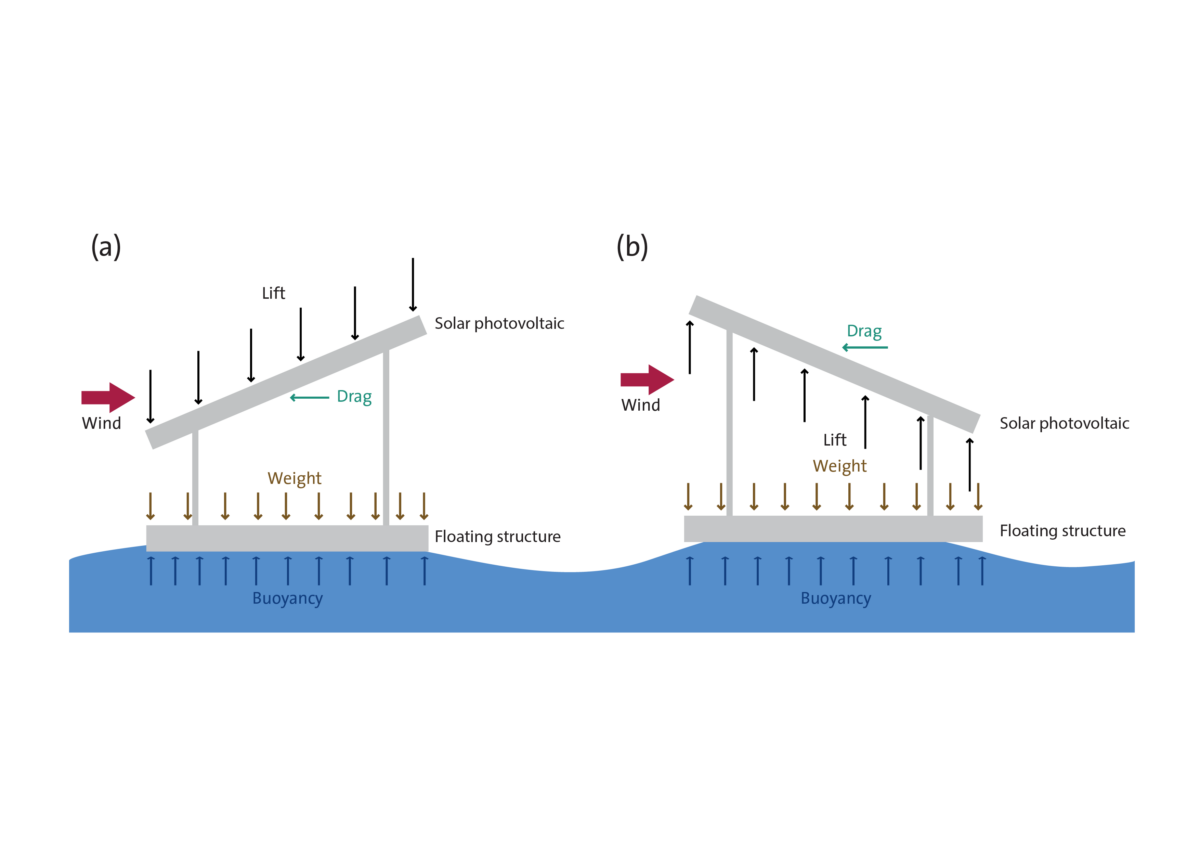A group of scientists from China conducted a numerical study on the wind sensitivity of offshore floating photovoltaics in an effort to investigate system configurations that may be less sensitive to wind direction.
The researchers conducted a series of simulations on six PV array configurations considering factors such as wind velocity, pressure distribution, and turbulence field, as well as lift and drag coefficient.
“Some researchers have found that the wind resistance of the photovoltaic panel is completely different when the photovoltaic panel is subjected to wind on the front and back respectively,” the academics said. “Thus, the lift and resistance of the photovoltaic panel can be balanced by changing the arrangement of the photovoltaic panel to prevent the sinking or overturning of the photovoltaic platform.”
As a research object, the scientists simulated a row of six PV panels with 1.5 meters of space between them. All panels had the same dimensions of 2.187 m × 1.102 m × 0.02 m and were either tilted at 15 degrees or 165 degrees.
The numerical description took into account the wind flow, the growth rate of turbulent kinetic energy, and stress anisotropy, among other factors. It was then verified in a wind tunnel experiment that had PV panels at a scale of 1:20. “In general, the results show that the numerical model of this study is accurate and effective,” said the scientists.
One of the PV system configurations, called array A, had all six panels at a tilt of 15 degrees, the most common installation angle that is also widely used in floating farms. Array B is described as a specific floating photovoltaic solution that looks like a gable structure. In this system, the first panel has a tilt of 15, the second 165 degrees, the third 15 degrees, the fourth 165 degrees, the fifth 15 degrees, and the sixth 165 degrees.
Popular content
“Arrays C, D, E, and F actually refer to the installation types of arrays A and B,” the researcher also explained. “The main difference between them is the order of the two tilting angles of the photovoltaic panels (15 degrees and 165 degrees).”
The modeling showed that the array B configuration was the least sensitive to wind direction. It also had the least lifting torque and small pressure distribution on the surface of the PV panel. “Compared with resistance, the lift is more sensitive to photovoltaic panel arrangement, and the primary influence is the lift direction,” they also concluded.
The team also highlighted that, regardless of the arrangement of the PV panels, the first panel always experienced higher wind loads than other panels. “The pressure load (Cp) value distribution curve is similar, and the Cp value on its upper surface is basically the same in gradient distribution,” they added.
“It is found that the wake vortex of the array photovoltaic panel consists of two patterns of vortex structure. One is the continuous trailing vortex from the left and right sides of the photovoltaic panel. The other is small-scale vortex shedding from the center,” they said. “The drag and lift of the mutually parallel panels all show the same trend of gradual increase or decrease with increasing the pitch angle of the platform.”
The modeling was introduced in the paper “Numerical study on the sensitivity of photovoltaic panels to wind load on array layout,” published in the Sustainable Horizons journal. The research was conducted by academics from China’s Dalian University of Technology and Zhejiang University.
This content is protected by copyright and may not be reused. If you want to cooperate with us and would like to reuse some of our content, please contact: editors@pv-magazine.com.


2 comments
By submitting this form you agree to pv magazine using your data for the purposes of publishing your comment.
Your personal data will only be disclosed or otherwise transmitted to third parties for the purposes of spam filtering or if this is necessary for technical maintenance of the website. Any other transfer to third parties will not take place unless this is justified on the basis of applicable data protection regulations or if pv magazine is legally obliged to do so.
You may revoke this consent at any time with effect for the future, in which case your personal data will be deleted immediately. Otherwise, your data will be deleted if pv magazine has processed your request or the purpose of data storage is fulfilled.
Further information on data privacy can be found in our Data Protection Policy.